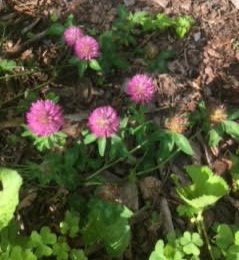INTRODUCTION
Beth Harris is a Malden resident and a harpsichord technician by trade. Through her walks, bike rides, and reading, she learned about the flora and fauna of the Mystic River watershed and began thinking of ways to use local, natural materials to live more sustainably. In this second guest blog, Beth talks about some of the edible non-native and invasive species that you can find around the watershed during springtime and how she makes use of them through cooking.
by Beth Harris
With the onset of hot season, I imagine myself lying in a hammock in the shade, reading a good book and taking in the warm summer evening. Human life in eastern Massachusetts takes on a different pace in the summer, more relaxed, and somehow less… er, academic. I say the human life, because the plant life is all in high gear, growing, maturing, flowering, setting fruit, stuffing whole lifetimes into our short growing season.
A month ago I was regularly amending my salads with wild greens, a mixture of native and non-native. Many of those have gotten tough recently and not as tasty, though certainly still edible. However, one salad green is just getting going. Meet lamb’s quarters. When it’s small, this annual visitor to garden beds everywhere makes a great salad or stir fry addition. I like to give it an extra good wash because the undersides of the leaves have a sandy texture I find super weird. Also, TIL (today I learned) that Lamb’s quarters is not only native, but was cultivated as a cereal crop by Native Americans in pre-Columbian times. Check out https://en.wikipedia.org/wiki/Chenopodium_berlandieri if you want to read more about that. I have heard before that the seeds are good, but I’ve never managed to collect any. Here’s to allowing more of this interesting plant to grow and thrive!
Red clover flowers (top) and wood sorrel (bottom). PC: Beth Harris
As to the other wild greens, they have become “survival food.” You’d eat them to survive, but pass them by otherwise. One of the most ubiquitous of these is clover. Now, I’m not thinking here about the tiny white clover that grows in lawns (though it’s also technically “edible”). I’m thinking about red clover which is a little bigger, with purple flower heads. All clover is capable of fixing nitrogen (an important plant nutrient) from the air and leaving it for other plants in the soil, which is like magic. Thus, I’ve never heard anyone call it invasive though it was introduced from other continents. In any event, I have a Chinese friend who swears by red clover greens early in the season for sautéing. Apparently I have never caught red clover early enough to try this. Every time I try a leaf, I think, “why would someone want to eat this?” I have, however, been in time for the flowers. As a kid I would pick the flowers out of the head and suck the tiny bit of nectar from the base. As an adult I learned about drying and grinding them with a flour mill, flower flour, if you will. I’ve used it in zucchini bread, which comes out with the lightest of meadowy flavor along with its usual sweetness.
Alongside the red and white clover lives another ground cover, one with yellow flowers, which I find much more interesting in flavor. It looks a little like clover, but rather than having round leaves with white V’s, these heart shaped leaves belong to wood sorrel. They are very tart. Have a nibble of wood sorrel and a nibble of clover, and you will never confuse the two again. To me wood sorrel is like lawn candy (or maybe lawn Sour Patch Kids). I also like them for a pop in a sandwich wrap.
And I would be remiss if I didn’t mention how much I’m looking forward to the berries. I look for the ones on thorny bramble bushes, which include blackberries, raspberries, and my personal favorite black caps (also called black raspberries). Not many make it onto my breakfast cereal, because they go right in my mouth when I find them, and because for the most part the animals get them before me. As far as I know most of the brambles around here are native, so if I find them wild I like to make sure the stand is established enough not to mind me on the edges. Where I grew up in New York State there was a path beneath the nearby power lines that was surrounded by acres of black caps. It was a July tradition to take a bowl up and brave the thorns to collect what we could. Somehow the bowls never got very full, but our faces would be stained with berry juice and our hands scratched up from thorns.
Such is the way of non-domesticated plants. They coexist alongside us, and take care of us, even as they take care of themselves. In my imaginary hammock I enjoy the scent of heavy summer air. I am held by the nurturing, but tough natural world, as surely as I am by the tough ropes of the hammock woven together to cradle me.







